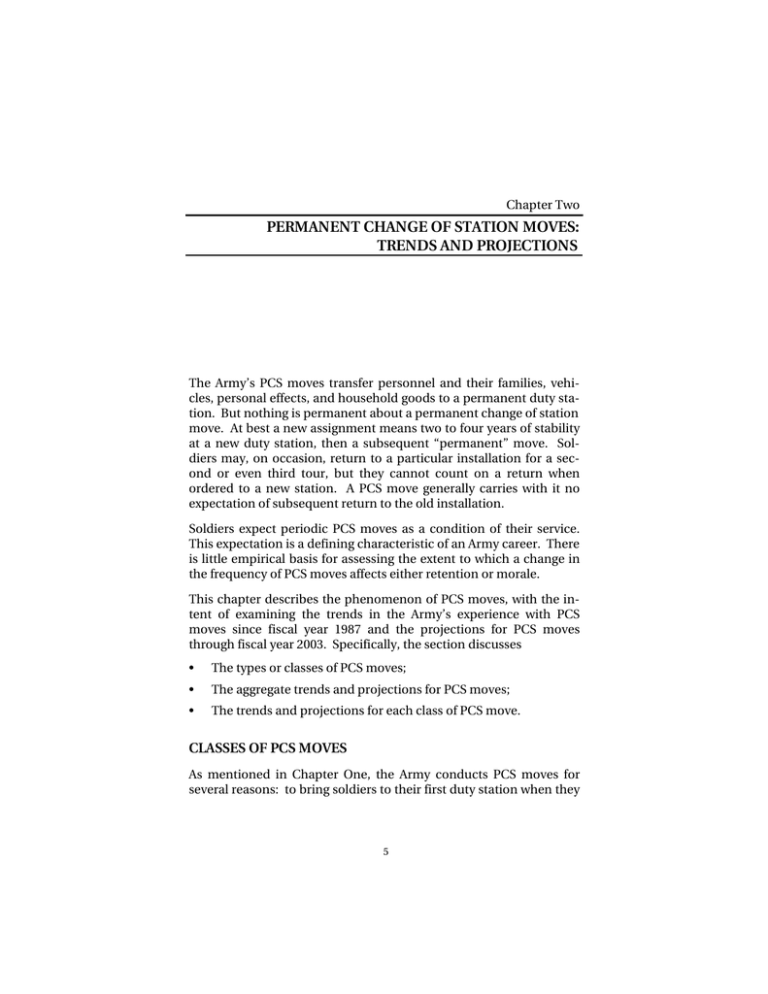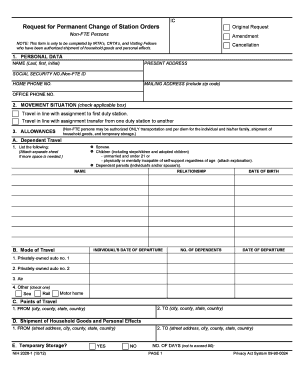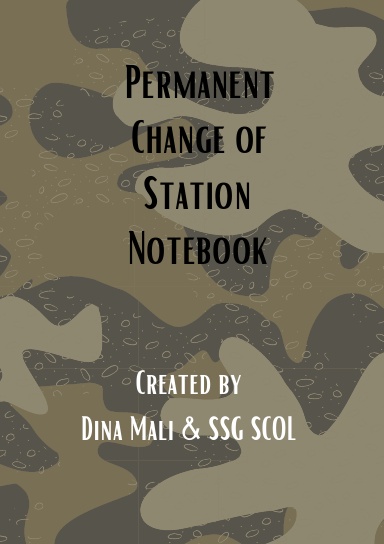Permanent Change Of Station Regulation
Permanent Change Of Station (PCS) - A Guide to Seamless Relocation Relocating to a new place can be both exciting and daunting, especially when it involves a Permanent Change of Station (PCS) in the military. As a service member, you have the privilege and responsibility of serving in different locations throughout your career. To ensure a smooth transition and make the most out of your PCS, it is crucial to understand the regulations and guidelines set forth. In this post, we will delve into the Permanent Change of Station regulation, offering you invaluable insights to help make your relocation journey a seamless one. Heading 1: Understanding Permanent Change of Station (PCS) A Permanent Change of Station (PCS) refers to the official relocation of a military member to a new duty station, either within the same country or internationally. This relocation can result from various circumstances such as a change in assignment, deployment, or retirement. PCS provides an opportunity for service members to experience new environments, meet different people, and contribute to missions around the world. Heading 2: Benefits of PCS Undergoing a Permanent Change of Station offers numerous benefits for military members and their families. Here are a few key advantages: 1. Broadened Horizons: PCS allows you to explore new locations and cultures, broadening your knowledge and experiences. 2. Career Growth: Relocating to different duty stations presents opportunities for professional development and advancement within the military. 3. Personal Growth: PCS provides a chance to adapt to new challenges, develop resilience, and build lasting relationships. Heading 3: PCS Regulation Highlights The Permanent Change of Station regulation encompasses various aspects, from entitlements and allowances to property management. Let's explore some essential highlights of the PCS regulation: 1. Relocation Allowance: As part of PCS entitlements, service members receive relocation allowances to cover expenses such as transportation, lodging, and meals during the move. Be sure to keep receipts and consult your Finance Office for accurate reimbursement. 

 Image Source : studylib.net
Image Source : studylib.net  Image Source : www.dvidshub.net
Image Source : www.dvidshub.net  Image Source : www.pinterest.co.uk
Image Source : www.pinterest.co.uk  Image Source : www.helpingthehomefront.org
Image Source : www.helpingthehomefront.org  Image Source : www.meditec.com
Image Source : www.meditec.com  Image Source : www.signnow.com
Image Source : www.signnow.com  Image Source : www.militaryplaques.com
Image Source : www.militaryplaques.com  Image Source : www.lulu.com
Image Source : www.lulu.com
Pin on PCS - Permanent Change of Station

One of the key images related to Permanent Change of Station (PCS) is the "Pin on PCS - Permanent Change of Station" image.
2. Housing Options: Depending on your rank and availability, the military may provide on-base housing or offer a Basic Allowance for Housing (BAH) to help cover off-base housing costs. Make sure to familiarize yourself with the options available at your new duty station.Permanent Change of Station PCS Presentation Plaque

Another important symbol associated with PCS is the "Permanent Change of Station PCS Presentation Plaque".
3. Household Goods Transportation: PCS typically involves the relocation of your household goods, which includes furniture, appliances, and personal belongings. The military provides resources to facilitate the transportation process, ensuring your possessions reach your new duty station safely. Heading 4: PCS Listicle - 5 Tips for a Successful Relocation Relocating with the military can be a challenging undertaking. To ensure a successful PCS, consider the following tips: 1. Plan Ahead: Start preparing for your PCS well in advance. Create a checklist, gather important documents, and notify the necessary authorities about your relocation plans. 2. Stay Organized: Keep track of important paperwork, orders, and receipts. Maintaining an organized system will help streamline the entire process. 3. Communicate: Ensure open and frequent communication with your relocation support office, transportation office, and other stakeholders involved in your move. Address any questions or concerns promptly. 4. Research Your New Location: Familiarize yourself with your new duty station. Research local amenities, schools, medical facilities, and housing options. This knowledge will enable you to make informed decisions and settle in smoothly. 5. Embrace the Journey: Relocations can be stressful, but they also offer exciting opportunities. Embrace the journey, make new connections, and explore the unique experiences your new duty station has to offer. Heading 5: Frequently Asked Questions (FAQs) To provide you with additional insights, here are some commonly asked questions regarding PCS: Q1. How soon should I start planning for my PCS? A1. It is advisable to start planning for your PCS as soon as you receive your orders. The earlier you start, the smoother the process will be. Q2. Will the military cover the cost of moving my pets? A2. Yes, the military offers provisions for the transportation of pets during a PCS. However, there may be limitations and restrictions depending on the destination. Q3. Can my spouse assist in the PCS process? A3. Absolutely! Spouses play a vital role in the relocation process. They can help with paperwork, packing, and coordinating logistics, ensuring a successful move. In conclusion, a Permanent Change of Station (PCS) is an integral part of a military career. Understanding the regulations and guidelines outlined in the PCS regulation is essential for a seamless relocation. By familiarizing yourself with the benefits, entitlements, and tips provided in this post, you can make the most out of your PCS journey. Embrace the opportunities that come with each relocation, and remember to stay adaptable and open to new experiences. Safe travels!PERMANENT CHANGE OF STATION MOVES: TRENDS AND PROJECTIONS
 Image Source : studylib.net
Image Source : studylib.net DVIDS - Images - Civilian Permanent Change Of Station Infographic
 Image Source : www.dvidshub.net
Image Source : www.dvidshub.net Pin On PCS - Permanent Change Of Station
 Image Source : www.pinterest.co.uk
Image Source : www.pinterest.co.uk Blessed Before A Permanent Change Of Station
 Image Source : www.helpingthehomefront.org
Image Source : www.helpingthehomefront.org PCS Orders: What Is Permanent Change Of Station? | Meditec
 Image Source : www.meditec.com
Image Source : www.meditec.com Permanent Change Of Station Orders Example Form - Fill Out And Sign
 Image Source : www.signnow.com
Image Source : www.signnow.com Permanent Change Of Station PCS Presentation Plaque
 Image Source : www.militaryplaques.com
Image Source : www.militaryplaques.com PCS Permanent Change Of Station Notebook
 Image Source : www.lulu.com
Image Source : www.lulu.com Pcs orders: what is permanent change of station?. Pcs permanent change of station notebook. Pin on pcs. Permanent change of station orders example form. Permanent change of station moves: trends and projections